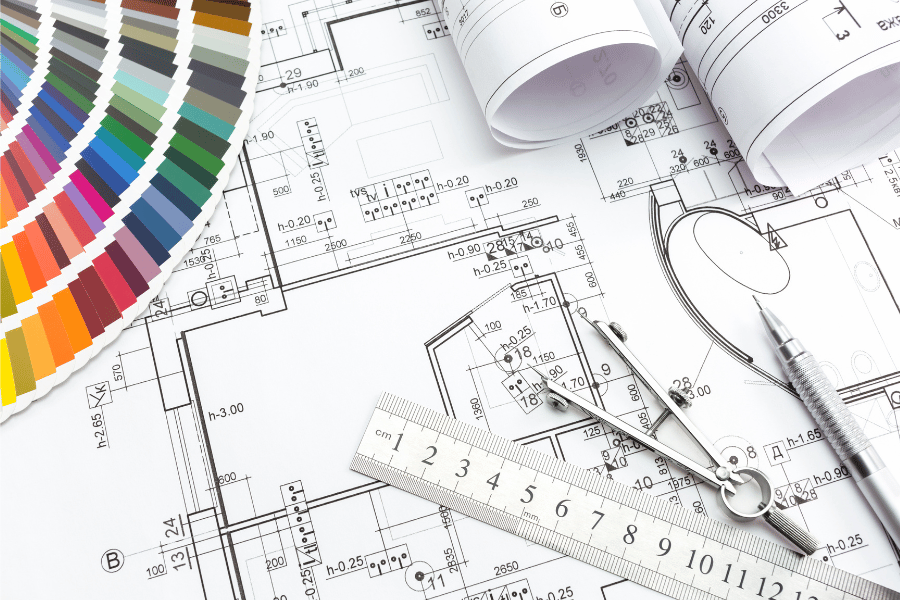When it comes to home design, paint is one of the most powerful tools in your arsenal. And, while we can’t actually change the size of a room with paint, we can transform a space, evoke emotions, and even alter the perceived dimensions.
Whether you’re looking to make a small room appear larger, a large room feel cozier, or simply change the shape of a space, strategic use of color and painting techniques can work wonders.
In this blog post, we’ll explore how to use paint to create visual illusions and change the look and feel of your rooms.

Understanding the Basics of Color Psychology
Before diving into techniques, it’s essential to understand how colors affect perception. Light colors tend to make a space feel larger and more open, while dark colors can make a room feel more intimate and smaller.
Warm colors (like reds, oranges, and yellows) can create a cozy atmosphere, whereas cool colors (such as blues, greens, and purples) can make a room feel more expansive and serene.
Making a Small Room Appear Larger
- Use Light Colors and Cool Tones: Choose light, cool colors to give the illusion of more space. Shades of white, light blue, pale gray, and soft greens reflect more light, making the room appear larger and airier.
- Monochromatic Color Schemes: Using different shades of the same color can create a seamless look, reducing visual breaks and making the room feel more expansive. For example, pairing a light blue with a slightly darker blue can subtly enhance the sense of space.
- Paint the Ceiling a Lighter Color: A lighter ceiling can make it feel higher, which in turn makes the entire room feel larger. This trick works particularly well in rooms with low ceilings.
- Strategic Use of Mirrors: While not a painting technique, placing mirrors opposite windows or light sources can amplify natural light and create the illusion of depth and space.
Creating a Cozy, Intimate Space in Large Rooms
- Darker, Warm Colors: To make a large room feel cozier, consider using darker, warm colors like deep reds, rich browns, and dark greens. These colors absorb light, making the room feel more enclosed and intimate.
- Accent Walls: Painting one wall in a darker or contrasting color can draw attention to that wall and make the room feel smaller. This technique is excellent for creating a focal point and adding depth to a large space.
- Ceiling and Floor Color Coordination: Painting the ceiling a darker color or the same color as the walls can make the room feel more compact. Similarly, darker floor colors can anchor the space, giving it a grounded, cozy vibe.
Altering Room Shapes with Paint
- Horizontal Stripes: Painting horizontal stripes on the walls can make a narrow room appear wider. This technique draws the eye across the room, creating the illusion of breadth.
- Vertical Stripes: Conversely, vertical stripes can make a room with low ceilings seem taller. The upward direction of the stripes elongates the perception of height.
- Color Blocking: Dividing a wall into different blocks of color can change the perception of a room’s proportions. For example, painting the lower third of a wall a darker color can make the ceiling seem higher.
- Ceiling Color Extending to Walls: Extending the ceiling color a few inches down the walls can create the illusion of higher ceilings. This technique tricks the eye into seeing the ceiling as taller than it actually is.
Tips for Optimal Results
- Test Colors First: Always test paint colors on a small section of the wall and observe them at different times of the day. Light changes can significantly alter how a color looks.
- Consider the Finish: Matte finishes can hide imperfections on walls, while glossy finishes reflect light and can make colors appear more vibrant. Choose the finish that best suits the effect you’re aiming to achieve.
- Quality Paints and Tools: Investing in high-quality paints and tools can make a significant difference in the final result. Quality paints offer better coverage, richer colors, and longer-lasting finishes.
Conclusion
The art of illusion in interior painting is a fascinating way to manipulate the perception of space within your home. By understanding the impact of colors and employing specific painting techniques, you can transform any room to better suit your needs and preferences.
Whether you’re looking to create a cozy nook or expand a smaller space, paint can be your best ally in achieving the perfect ambiance. So, grab your paintbrush, unleash your creativity, and start transforming your home, one stroke at a time.

Leave a Reply